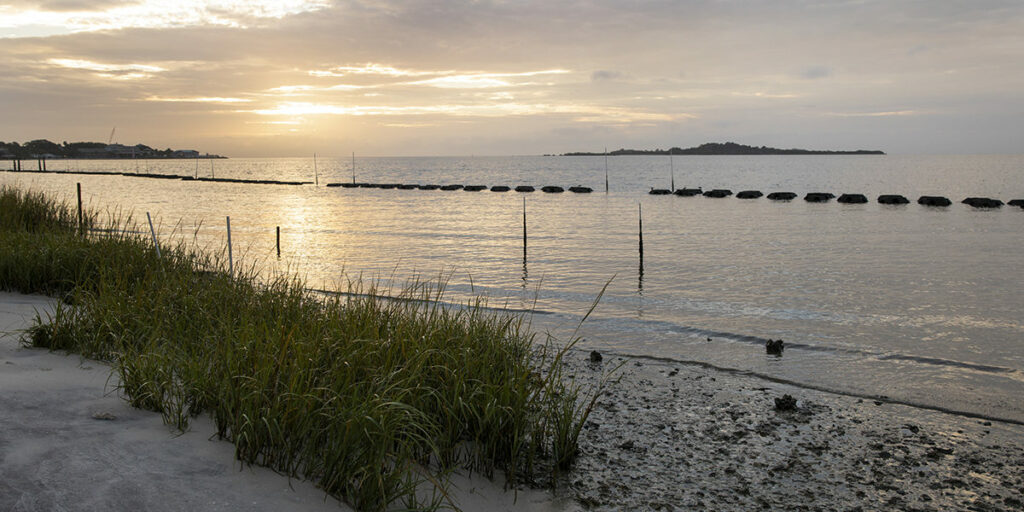
Living shorelines use natural materials like sand, oysters, and marsh grass to protect coastal property from erosion and to promote ecosystem health and improved water quality. UF/IFAS Sea Grant agents and affiliate researchers have created a series of documents that describe how living shorelines function, what their benefits are, as well as permitting and installation considerations.
The newest in the series, Living Shoreline Monitoring—How do I evaluate the environmental benefits of my living shoreline?, provides homeowners, land managers and Extension agents methods to measure ecosystems functions associated living shorelines. These functions include protection from erosion, reduction of wave action, creation of habitat, and removal of nutrients from water, among others. This publication can also be used by community science groups engaged in constructing and monitoring living shorelines. Measuring living shoreline functions will help evaluate living shorelines projects as well as provide the foundation for monetizing the value of these structures.
The document and other living shorelines information can be accessed for free at: https://edis.ifas.ufl.edu/ss694